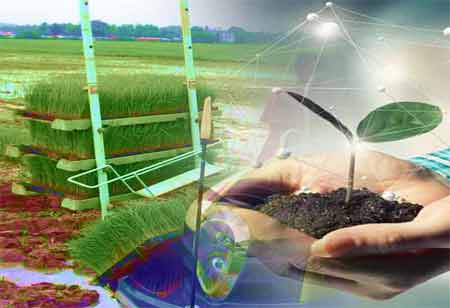Thank you for Subscribing to Agri Business Review Weekly Brief
Modern Dairy Farms Leverage Innovative Technologies to Optimize Performances
The dairy farming sector has also experienced significant changes as technology has progressed.

By
Agri Business Review | Friday, June 30, 2023
Stay ahead of the industry with exclusive feature stories on the top companies, expert insights and the latest news delivered straight to your inbox. Subscribe today.
From robotic milking systems and automated feeding systems to wearable technology and precision livestock farming, these technologies enhance efficiency, productivity, and animal welfare.
FREMONT, CA: The dairy farming sector has also experienced significant changes as technology has progressed. Modern dairy farms are now embracing cutting-edge technologies to optimize the performance of their dairy animals. These advancements enhance efficiency and productivity and improve animal welfare and overall farm sustainability. T
Robotic Milking Systems:
Robotic milking systems have revolutionized the dairy industry by automating the milking process. These systems use sensors to identify and locate cows, clean their udders, attach milking cups, and monitor milk quality and quantity. By eliminating the need for manual labor, farmers can significantly increase milking efficiency while providing individualized care to each cow. Moreover, the constant monitoring of cows allows for early detection of health issues, ensuring prompt intervention and reducing the risk of mastitis and other ailments.
Automated Feeding Systems:
Advanced feeding systems provide precise and customized nutrition to dairy animals. These systems utilize sensors and software to monitor feed intake, analyze individual cow requirements, and dispense appropriate feed portions accordingly. This technology optimizes the animals' diets, reducing feed wastage and improving their overall health and productivity. Additionally, automated feeding systems can detect changes in eating patterns, indicating potential health issues such as ruminal acidosis or digestive disorders.
Wearable Technology and Sensors:
Wearable devices and sensors play a vital role in monitoring the health and behavior of dairy animals. Collars or leg bands equipped with sensors can track various parameters, including body temperature, activity levels, rumination time, and estrus behavior. Real-time data from these devices enable farmers to identify potential health issues or heat cycles, ensuring timely intervention and improving breeding efficiency. Moreover, the continuous monitoring of behavior patterns allows for the early detection of stress or discomfort, enhancing animal welfare.
Precision Livestock Farming:
Precision livestock farming (PLF) integrates data-driven technologies to optimize various aspects of dairy farming. This approach involves using data analytics, ML, and AI to analyze vast amounts of data collected from sensors, cameras, and other sources. PLF helps farmers make informed decisions on animal management, health, and reproduction, resulting in improved productivity, reduced costs, and enhanced animal welfare.
Environmental Control Systems:
Optimal environmental conditions are critical to the well-being of dairy animals. Advanced dairy farms employ sophisticated systems to control ventilation, temperature, humidity, and lighting. These systems use sensors and automated controls to regulate conditions inside barns and improve air quality. Creating a comfortable and stress-free environment not only enhances milk production but also reduces the incidence of respiratory diseases and improves overall animal health.





